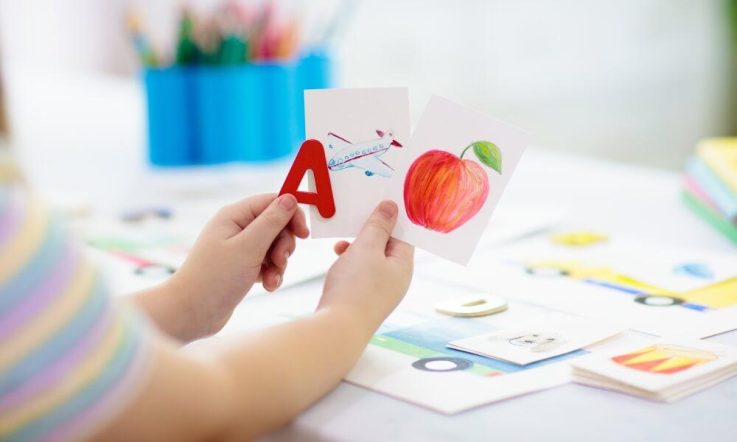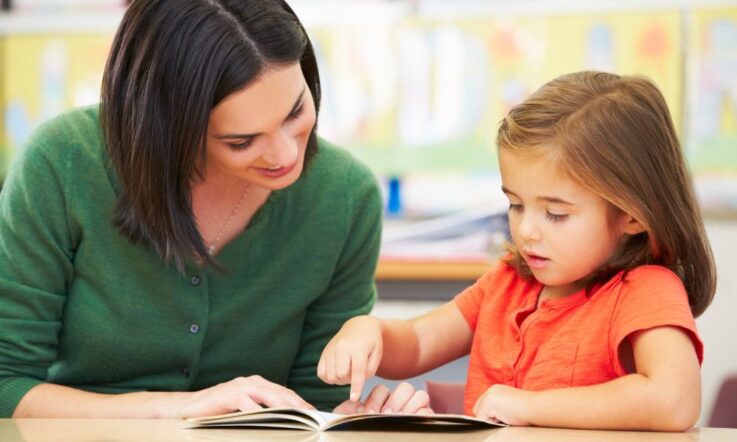There has been a lot of media coverage recently on the science of reading. But what does the evidence say? In their new paper on the topic, ACER Senior Research Fellow, Greta Rollo, and ACER Research Fellow Dr Kellie Picker, from the Effective Practice in Education team synthesise evidence reviews conducted by ACER researchers that unpack the science of reading.
In this 3-part series, Greta and Kellie have been unpacking the science of reading. In their first article, they provided an overview of the 6 key components of the science of reading. In their second article, they explained phonemic awareness, phonics and fluency in greater detail. This third and final article explores the unconstrained constructs – oral language, vocabulary and reading comprehension.
Unconstrained constructs that contribute to the science of reading are those that require deep conceptual development. They are those features of reading practice that continue to develop across the student’s life: oral language, vocabulary and reading comprehension.
Developing students’ oral language skills
Oral language is foundational for effective communication, enabling students to express themselves and comprehend others for mutual understanding. The reciprocal relationship between oral language and literacy means that reading and writing improve oral language and oral language improves reading and writing. Strong early language skills and effective communication are associated with students’ general learning ability and success in life.
Paul et al. (2017) identify 3 overarching components of oral language:
- Form – how language is put together
- Content – the meaning of the language
- Use – the practical applications of language
Systematic, explicit instruction in each of these elements of oral language supports learning.
Teachers contribute to students’ oral language development and communication skills through day-to-day classroom interactions, modelling complex syntax, and using sophisticated vocabulary. Receptive and expressive practices that encourage students to communicate using gestures, words, phrases and sentences are critical. Exchanges that include reading to students and actively engaging them in conversations around quality texts and literature introduce new vocabulary, colloquial language, and more complex syntax. They also encourage analytic talk and can be revisited to review and consolidate learning.
Developing students’ vocabulary
A student’s vocabulary is clearly linked to oral language development. Students with richer vocabularies read words more accurately because they develop more extensive associations between different words and understand how context affects word meanings. Rich language environments (both oral and written language) and explicit, systematic instruction contribute to a more abundant vocabulary and to more comprehensive understanding of ideas, which may in turn lead to more valuable experiences of reading.
Understanding how morphemes – the smallest meaningful units of a language – fit together to create specific word meanings further supports students’ vocabulary development. For instance, linking the morpheme ‘-believe-’ (meaning ‘accept as true or real’) and ‘-able’ (denoting ‘to be’) to know that ‘believable’ means ‘to be believed’.
Explicit, systematic teaching and using a structured literacy approach can deepen students’ awareness of the morphological structure of words. This includes, for example:
- teaching the meanings of affixes and base (or root) words
- discussing how a word’s component morphemes contribute to its meaning or grammatical form by drawing analogies between base morphemes and derived morphemes like -ed, -ing, and -acious
- detecting and correcting errors in spelling, creating new words with known/taught morphemes
- deriving the meanings of unfamiliar words from familiar words
Although vocabulary instruction studies rarely address specific instructional techniques in isolation, evidence-informed strategies include the use of music, rhyme and reading prosodic texts. Shared picture-book reading, using specific questioning and prompting strategies such as keyword definition, supports early readers to recall information and draw inferences.
Using predictive vocabulary strategies based on knowledge of semantic strategies and syntactic structures, and pre-post activities can also build vocabulary. Pre-teaching vocabulary for new content and reflective discussion of these responses leads students to further research into new key content. Post- activities allow students to use expanded vocabulary and language structures to reflect on their learning, which in turn demonstrates their comprehension of new ideas. Reflection leads to students’ self-awareness regarding the new subject-specific language and expressions they have acquired and demonstrates their comprehension of new ideas.
Developing students’ reading comprehension
The combined impact of applying knowledge of vocabulary to all the orthographic patterns results in the ultimate goal of reading – reading comprehension. Reading comprehension is a complex and active process that involves identifying individual text words (decoding) and constructing meaning from them. From this emerges the formation of rich mental models that build cumulatively as an individual reads. Along with being a key skill for content learning in school, reading comprehension is connected to academic achievement and life’s successes.
Readers’ background knowledge is critical, due to authors assuming a level of general knowledge which the reader may or may not hold. Thus, the experiences and understandings the reader brings to the text contributes to, or inhibits, comprehension – particularly if these experiences and understandings are partially formed or are based on misconceptions.
A major US study of reading comprehension identifies 8 instructional strategies, however multiple strategies are more effective than any single strategy. Effective reading comprehension instruction was also found to include emphasis on both narrative texts (such as novels) and expository or explanatory texts (such as those common to the humanities, mathematics, or science classrooms). Here, the National Reading Panel (2000) stressed that teachers need a depth of knowledge and an understanding of the kind of instructions that can be used to teach the comprehension strategies successfully.
Bringing it together
Instruction in all key constructs discussed across this Teacher series supports development of reading and reading comprehension, through the decoding and understanding of individual words, sentences and passages containing familiar vocabulary and ideas. Students move to more complex texts containing subtle layers of meaning, more complex vocabulary, and unfamiliar ideas. Therefore, oral language, vocabulary, phonemic awareness, and phonics development all contribute to the development of reading comprehension. Remember, there is overlap in the acquisition of these 6 essential constructs, with greater focus on certain constructs at specific stages of development.
Related reading:
Kellie Picker and Greta Rollo have also published an online visual resource, Unpacking the science of reading, that explains the Big 6 pillars of learning to read. You can read it here.
References
National Reading Panel. (2000). Teaching children to read. An evidence-based assessment of the scientific research literature on reading and its implications for reading instruction. National Institute of Child Health and Human Development. https://www.nichd.nih.gov/sites/default/files/publications/pubs/nrp/Documents/report.pdf
Paul, R., Norbury, C., & Gosse, C. (2017). Language disorders from infancy through adolescence (5th ed.). Elsevier.



